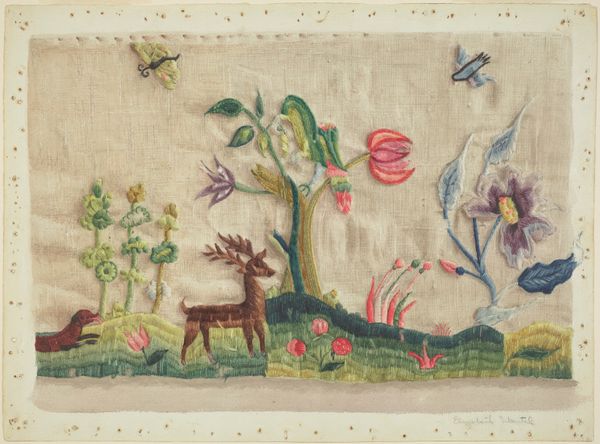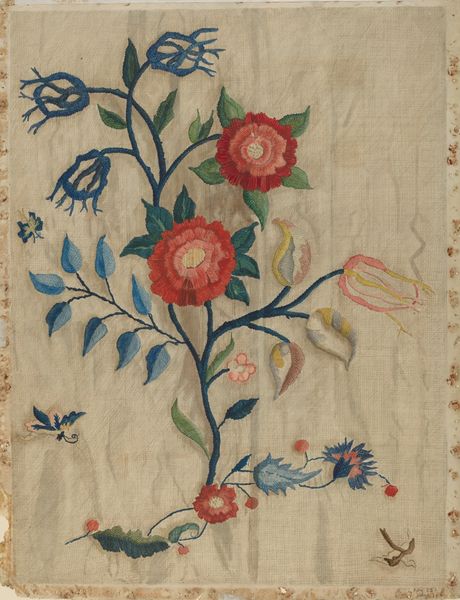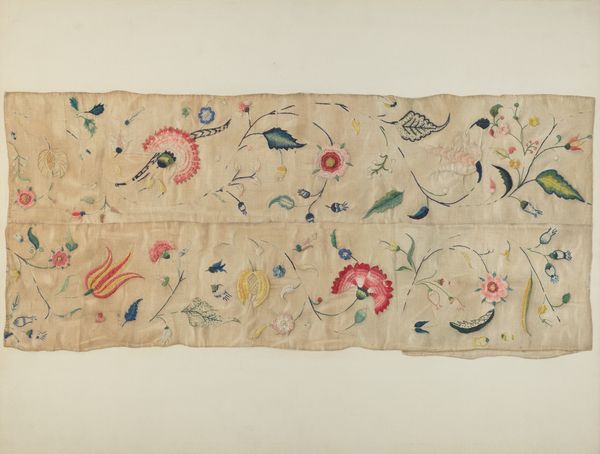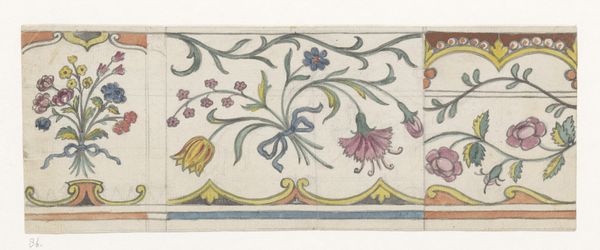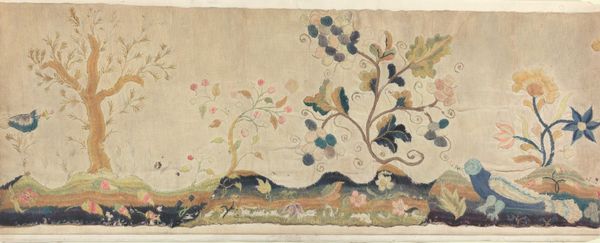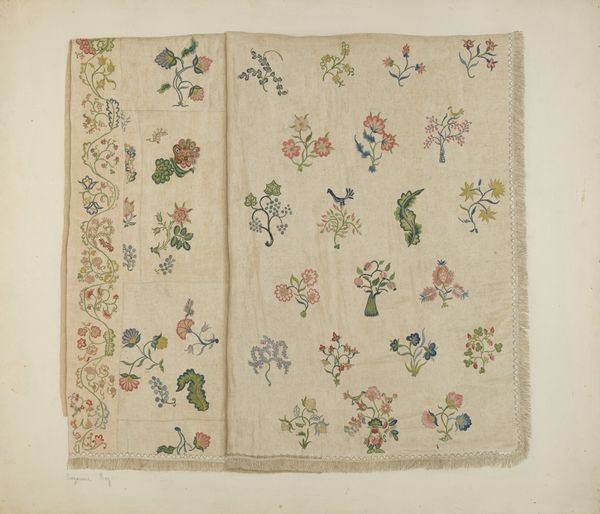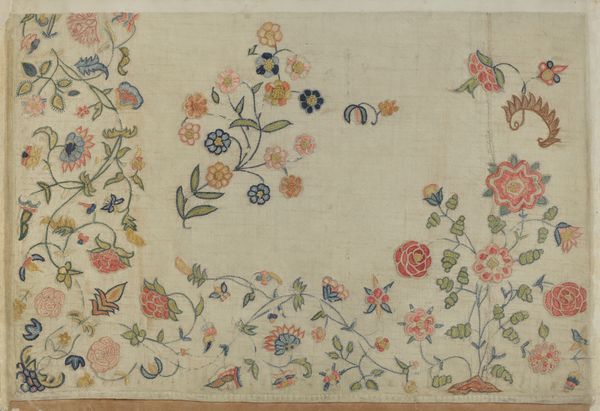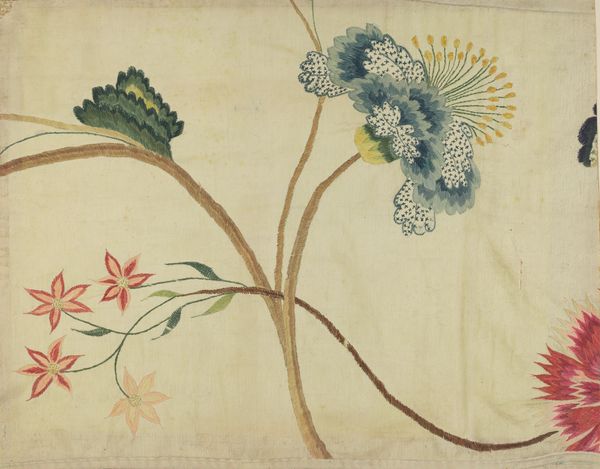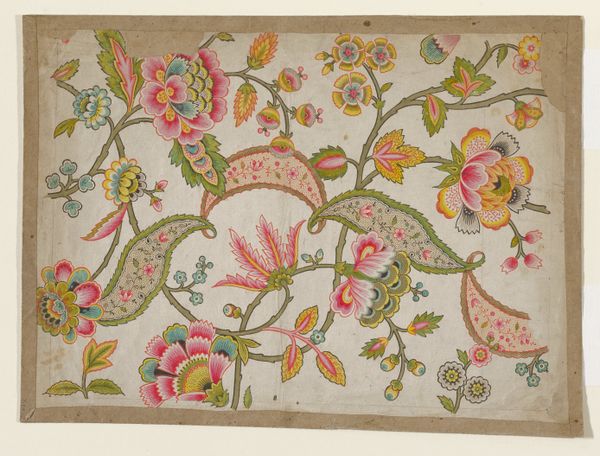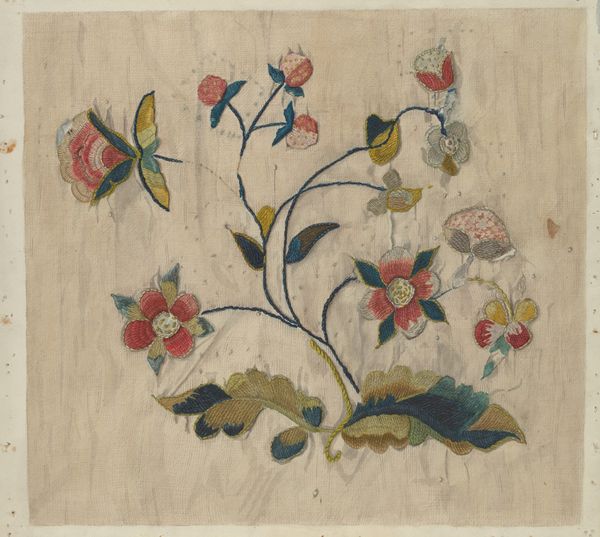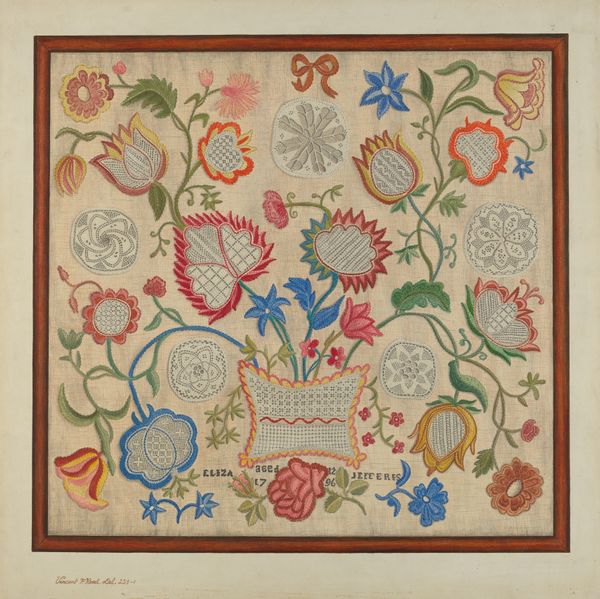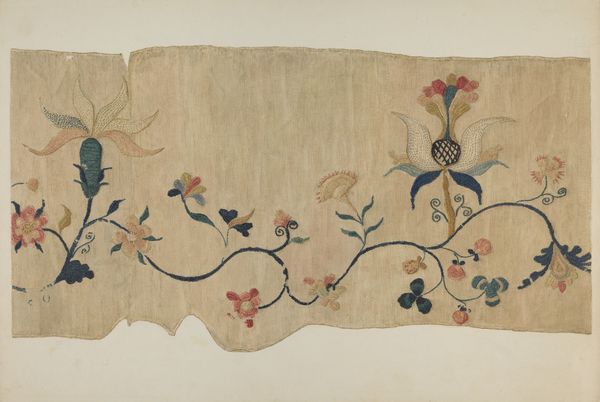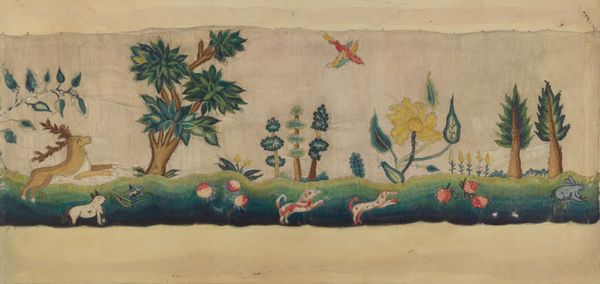
drawing, mixed-media, fibre-art, textile
#
drawing
#
mixed-media
#
fibre-art
#
water colours
#
textile
#
orientalism
Dimensions: overall: 33 x 54.8 cm (13 x 21 9/16 in.) Original IAD Object: 11 1/4" high; 20 1/2" long
Copyright: National Gallery of Art: CC0 1.0
Curator: This mixed-media piece, "Valance," thought to have been created between 1935 and 1942 by Suzanne Chapman, strikes me immediately with its intriguing combination of techniques and styles. The blend of drawing, fibre-art, and textile work is quite captivating. Editor: It feels deliberately archaic, almost like a sampler recovered from centuries ago. The naive renderings of flora suggest a longing for some idealised past. I wonder, is it supposed to invoke orientalism? Curator: The tag for orientalism suggests that it could be the artist's conscious reference. It is intriguing to observe how Chapman utilises watercolors alongside traditional fiber art to accomplish that style. Editor: Precisely. And, in terms of materiality, I'm curious about the kind of fabric used as a base, because its weave significantly influences how the drawing and textile elements interact and if the artist might be nodding to similar pieces done centuries earlier. Was this intentionally repurposed, lending it further historical resonance? Curator: That’s a crucial point. The choice of this particular textile stock transforms the artwork, pushing it from being simply decorative to a medium to make social and cultural claims. It highlights the significance of textile production and its links to notions of labor, economy, and craft versus high art. Editor: The political implications can't be ignored either. In what public context would someone choose to showcase this 'valance'— a humble household item, laden with historicizing artistic approaches? Did they see themselves subtly rewriting historical depictions through textiles? The choice to include these particular motifs – which were clearly chosen, maybe a reproduction, from older samplers is loaded. Curator: Considering how art institutions have often sidelined fiber art as merely decorative or "feminine," this subversion reclaims agency and questions cultural and historical narratives and their display and reception. Editor: The labor behind it needs a shout-out. Crafting it needs time, practice, material knowledge, all too easy to pass off as unimportant skills but vital, formative methods of creating. It is worth understanding where these sorts of works lived within the broader movement of their time period, or to learn whether similar ideas floated about in other contemporaneous works of fiber or mixed media from around that time. Curator: Absolutely, its impact stems both from what we see directly but is further amplified as we unpack what this means in social and artistic practices. A deeper material reading really makes you appreciate Chapman's creative talent! Editor: It highlights how everyday textiles can reflect big societal shifts and personal expressions, pushing us to rethink who gets to define ‘art’ and ‘history.'
Comments
No comments
Be the first to comment and join the conversation on the ultimate creative platform.
